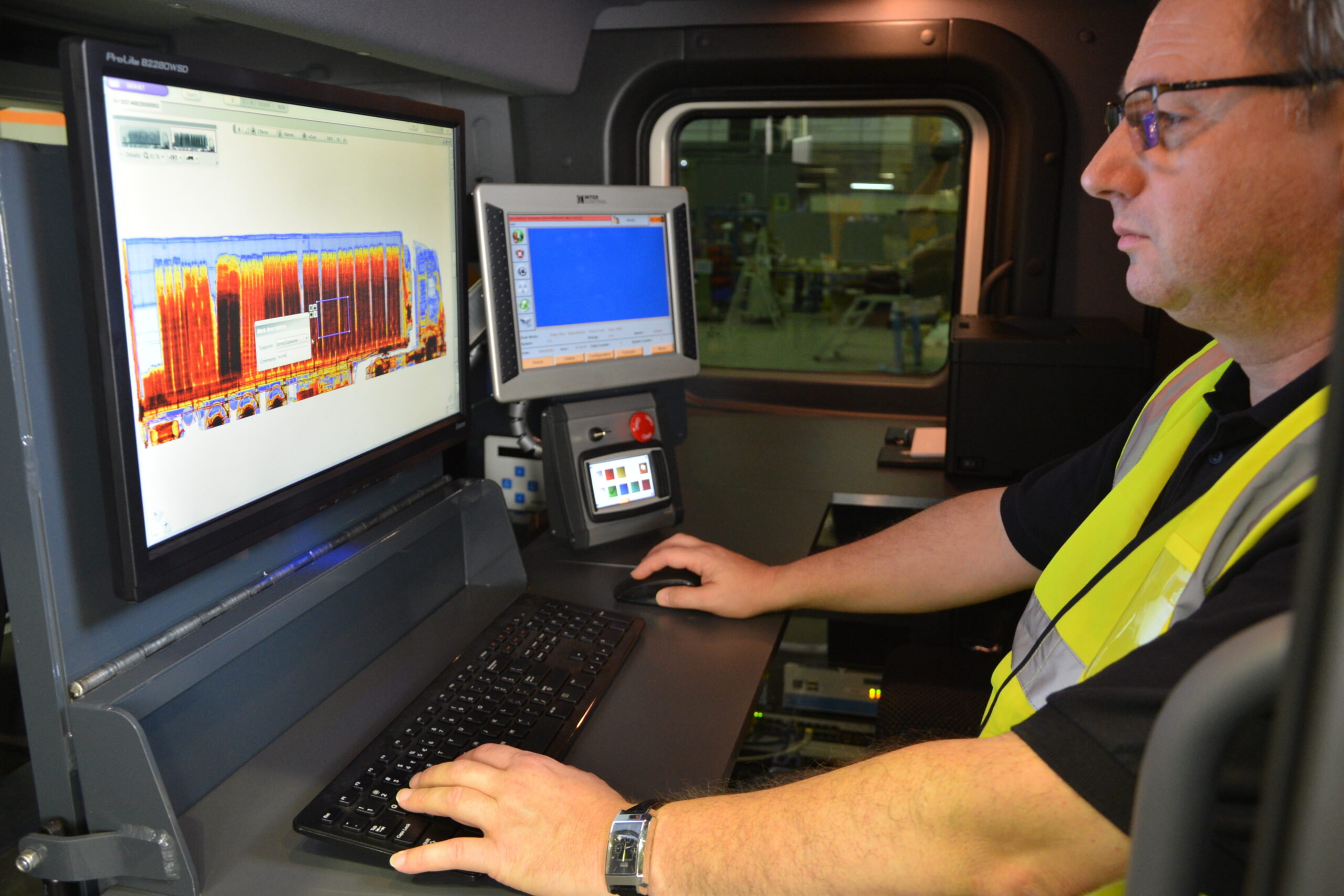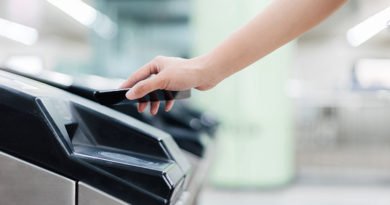X-ray diffraction technology – the next frontier in automatic threat detection
The winding road of threat detection
Today’s ever-evolving threats require ever-evolving technological advancements in security screening. The threat from a growing range of items currently prohibited, or classified as dangerous, in shipping, such as lithium batteries, fentanyl, liquid meth, cocaine, novel explosive devices and firearms demands increasingly high standards for detection equipment. Moreover, with accelerated growth in international trade and e-commerce, short delivery times, and increasingly interconnected global supply chains, the need for efficiency across the air cargo ecosystem, both in mandatory security screening and in screening for contrabands or dangerous goods, has increased.
In response, next generation screening is likely to move even further towards automatic threat resolution and away from operator-based analysis. As well as advancing security, this will also address operational efficiency by significantly reducing the false alarm rate. AI and deep learning are supporting the development of sophisticated detection algorithms, but the sheer diversity of new threats and constantly changing composition of substances will require an even more sophisticated approach. Security operators are looking to future proof their operations to ensure the quick, efficient, and safe transit of goods.
The answer lies in a combination of computed tomography (CT) and X-ray diffraction (XRD) technologies. CT uses density to detect substances and XRD perfectly complements this by accurately identifying unknown materials with ‘common’ densities as some threats and benign substances have similar or identical densities. XRD is not a new technology, but recent advances in the technology have made it even more suitable for integrated security screening applications.
Why XRD?
Today, XRD is an established method of identifying unknown crystalline materials, for example, inorganic/organic compounds and minerals, based on their molecular structure. A valuable tool for measurement and analysis, it is used in a broad range of industries and disciplines including pharmaceuticals, forensics, microelectronics, geology and engineering.
In security screening, XRD offers automatic, non-invasive detection and delivers superior levels of material analysis and substance identification. This makes it particularly suited to detecting narcotics in powder, liquid or solid forms and constantly changing compounds.
The technology has already shown exceptional sensitivity in finding and identifying narcotics in incoming aircraft luggage. It can significantly reduce the need for hand searches, trace detection and other manual processes. This also positively impacts staff resourcing, productivity, and operating costs. To further improve efficiency, XRD scanners can be used to screen items pre-selected based on intelligence received or suspicious X-ray images recorded at the point of origin; or integrated into a materials handling system.
Tag teaming
Conventional X-ray and Computed Tomography (CT), which produce 3D volumetric images, have been very effective in detecting explosives and, more recently, contraband, prohibited items, dangerous goods and other targeted items. There are, however, some unique challenges when it comes to improvised explosives and narcotics, which combine to make detection of these items very complex. For example, inconsistencies in physical characteristics occur when drugs are cut with other substances or different density substances are put into explosives. Unlike explosives stemming from military and industrial applications, ‘home-made explosives’ vary enormously in composition and content.
Simply put, CT technology looks at density to detect suspicious items, whereas XRD is a completely different approach based on the interference of electromagnetic waves on atoms. The fundamental difference is X-ray diffraction results in a spectral analysis rather than X-ray absorption which provides image density information.
The spacing between atoms within a molecule interferes with the X-ray waves and the signals from this interference provide data on the spacing. As each substance has a different pattern of spacing, the XRD uses the measurements to create a ‘diffraction fingerprint’ and hence differentiate between materials – even those with very similar densities. XRD was developed to investigate crystalline solids which have a very orderly structure. However, it is equally effective in identifying amorphous solids (e.g. glass) and liquids despite their more disorderly configuration which can still be well described with statistical parameters.
There is no singular security screening method that ensures 100% of all threats and contraband will be intercepted at checkpoints. Human error, incorrect operation, and mechanical malfunction will never be completely removed from the security screening process. Therefore, security operations that rely solely on one screening method to automatically detect threats are not as effective as operations that utilize multiple complementary screening methods.
Ready for lift off
Early XRD security screening systems have demonstrated increased efficiency in alarm resolution; and already shown exceptional sensitivity in finding and identifying narcotics in incoming aircraft luggage. Recent new advances now mean the technology is ready for broader deployment.
By replacing legacy X-ray sources with multi focus X-ray sources, therefore both CT and XRD, the latest systems are faster and more efficient with multiple diffraction beams covering a continuously moving belt. Full screening tunnel coverage enables highly parallel data acquisition. Reliability has been improved and maintenance streamlined by locating components on a fixed frame with moving parts restricted to the belt.
At this stage, two primary use cases have been identified for XRD. Firstly, as an orthogonal technology to existing, multi-level EDS applications; and secondly, for inbound contraband detection.
Minimising false alarm rates in a high-volume environment
Regulators define orthogonal technology as a system which can be deployed for alarm resolution of objects diverted from the first level of screening (Level 1). Effectively, XRD becomes the Level 2 process, using diffraction technology to analyse and ideally clear suspect items flagged up at the first automatic EDS stage (typically using CT technology for the most accurate results). In this levelled configuration, an XRD scanner is incorporated into the main handling system and a single device can be fed by several first level EDS scanners.
Typical applications include multi-level hold baggage screening at airports as well as high-speed operations, for example fast-forwarding small parcels. Automatically clearing false alarms or benign objects via XRD has been shown to reduce false alarm rates from 20% to 4%. The result is a significant reduction in operator online resolution, manual searches or trace detection – which, in such high-volume applications, translates into substantial operational cost savings.
Further reductions in false alarm rates can be achieved by deeper integration of the two technologies. This is known as a ‘System-of-Systems’, where the CT and XRD information is combined for joint decision making and therefore even greater, and quicker, resolution and accuracy. The CT system delivers its detection result downstream to the XRD which adds the diffraction fingerprint for any potential threat item.
Another string in the bow for customs agencies
Precise material analysis also makes XRD an effective weapon for customs agencies to intercept the increasing volume of narcotics and other prohibited items heading across borders. Custom agencies are under constant pressure to intercept narcotics distributed in small packages or envelopes via postal or courier services from crossing borders. Though millions of kilos of illicit drugs are seized every year, detection technology could help these demanding operations become even more efficient. In wider aviation, customs operators could also screen inbound flows of passengers at security before they enter a country.
Conventional X-ray and Computed Tomography (CT) scanners have proven to be very effective in detecting explosives and more recently also contraband, prohibited items, dangerous goods, and other targeted objects. There are, however, some unique challenges when it comes to narcotics. Narcotics detection is complex, as they are often cut with other substances, which changes their physical characteristics, and are inconsistent in shape and form. The answer for detection, therefore, lies in leveraging XRD technology to elevate detection accuracy.
When applied in this setting, items are generally picked out for in-bound investigation based on intelligence, data analysis or suspect X-rays taken at the point of departure. As screening is selective, the XRD is deployed as a Level 1 scanner.
Another key development, and one which is already well underway, is harnessing the power of artificial intelligence (AI) for object recognition. Cargo screening equipment is now being enhanced with ‘smart’ algorithms which identify an ever-expanding list of dangerous goods and contraband. These algorithms can be trained through machine learning techniques to offer powerful and accurate detection of objects. Any new substance or contraband compound detection will require a close partnership with Customs agencies and airports to support any improvements in current algorithms as well as new ones to be developed.
What next?
XRD perfectly complements the strengths of CT technology and together they can take detection accuracy to even higher levels required in response to tomorrow’s evolving threats. The technology will continue moving forwards with further technological enhancements and cost savings. Speed of screening and detection will increase, and it planned that it will eventually match CT throughput. More algorithms will be introduced to deal with an expanding list of targets as well as future-proofing the technology against emerging threats and regulatory changes.
Ultimately, we are likely to see CT and XRD technology combined into one unit. In this scenario, each item will be checked by both technologies simultaneously, leveraging the strengths of both techniques. This will add another line of defence for Customs agencies and security operators alike when coupled with existing technologies. Watch this space…
By Kevin Davies, Global Director – Ports & Borders, Smiths Detection




